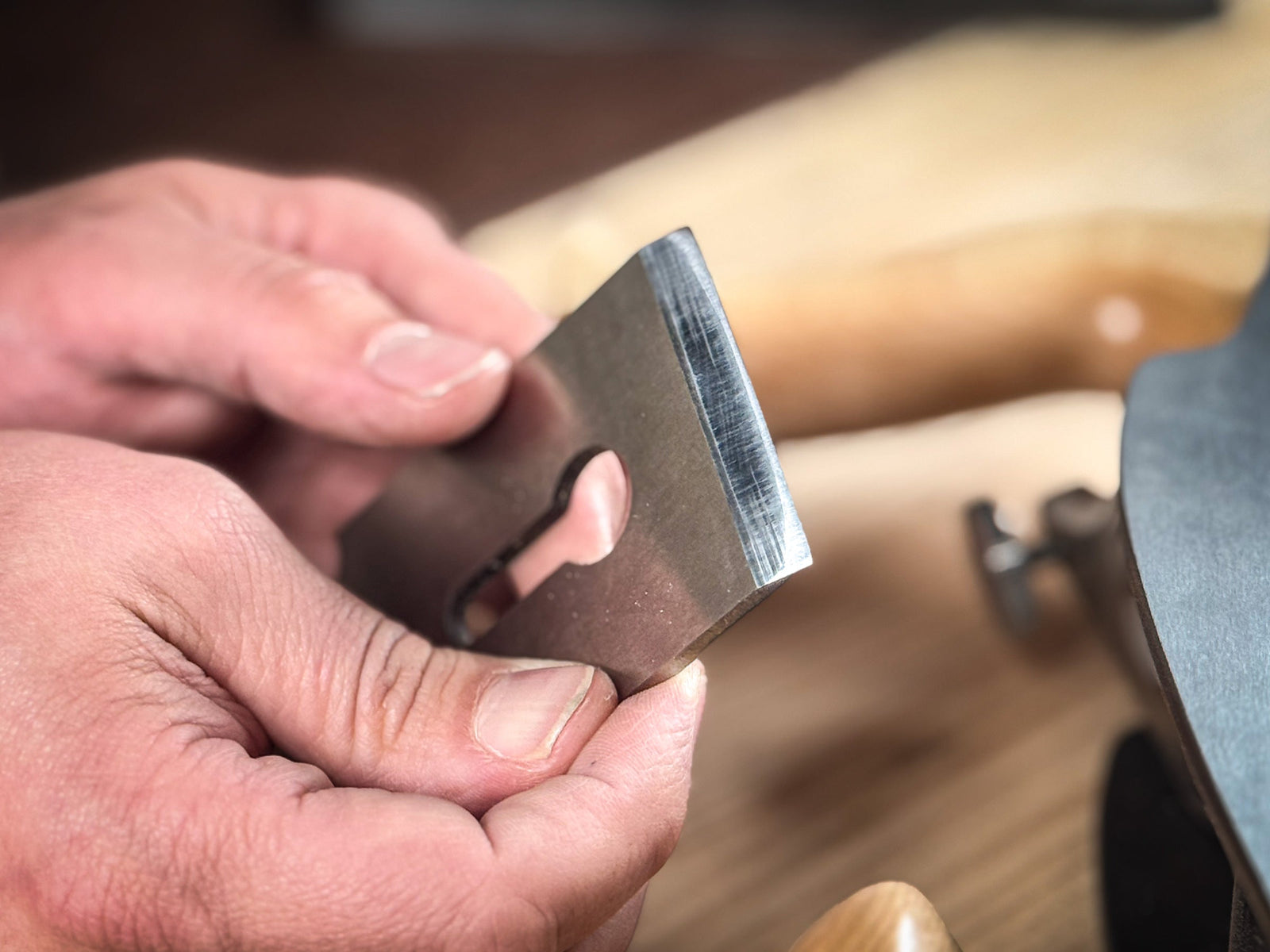There’s nothing quite like the satisfying feel of a freshly planed surface. If you’re new to hand planes, you probably started by breaking the sharp edges of your work. Maybe you progressed to jointing an edge, or trimming the end grain on a slightly miscalculated dovetail. But now you’re hooked, and you want a beautiful planed finish to a table-top or drawer front. But how do you plane a board that’s wider than the plane itself, without the corners of the blade digging-in and leaving tracks everywhere?
A cambered plane iron (or blade) is the answer. A camber is simply a gentle curve along the cutting edge, like a country road that is high in the middle to shed water. This means the middle of the blade takes a shaving, but the edges feather out to nothing to avoid the dreaded track marks.

But don’t we want a flat surface, not a curved one?
Well yes, but we’re making furniture here not a mirror or a pool table. The slight scallops that are introduced are greatly reduced by overlapping passes, as each pass removes the high spots. And the subtle effect left is part of the reason why a hand-planed surface is so compelling.

So how do we achieve a cambered blade?
For a subtle camber appropriate for most tasks, simply sharpen your blade as normal. Then, with pressure applied only to one corner, take a few dozen strokes on your sharpening stone. Repeat for the other corner, and then finish with a few strokes ‘rocking’ the pressure from side-to-side to round off the transition. With a low-angle blade, you want a larger camber than on a standard bevel-down plane, so don’t be afraid to take more time on this than you might hear elsewhere.
Are there any shortcuts?
Whilst establishing a camber can take a bit of work, once done it takes no longer to sharpen than a square blade. But if you want to get started quickly, there are two that I can think of:
The first is to establish the camber on a grinder with a jig or freehand – this can be especially useful to create a ‘scrubbing’ blade with an extreme camber, which is fantastic for flattening a rough-sawn board.

The second is to skip a camber all together, and just round off the corners. Simply sharpen your blade as normal, and then take each corner of the blade and drag it along the sharpening stone to chamfer the corner. This can be a bit unkind to your stone so go gently. With this technique you’ll have to be a bit more careful to ensure the blade is set square in the plane, but it is certainly quicker to get started.

Final Thoughts
Cambering might seem like a small tweak, but it’s one of those quiet techniques that separates a frustrating planing experience from a satisfying one. With a gently curved iron, your low-angle plane becomes a more forgiving, more precise tool—ready to leave behind silky surfaces on even the widest boards.
Happy planing!

